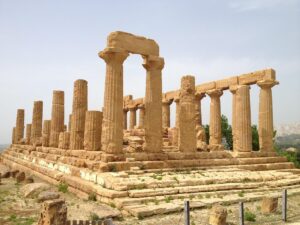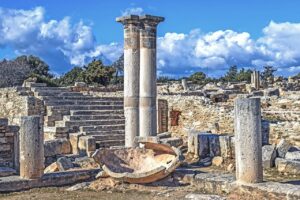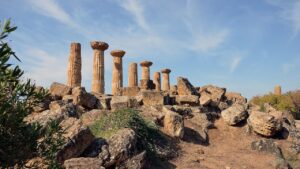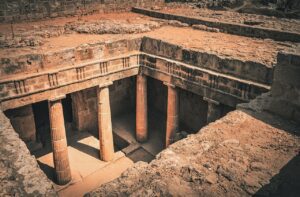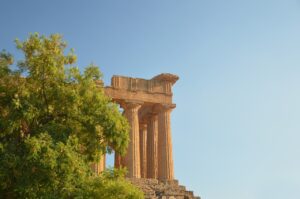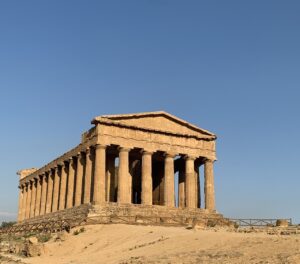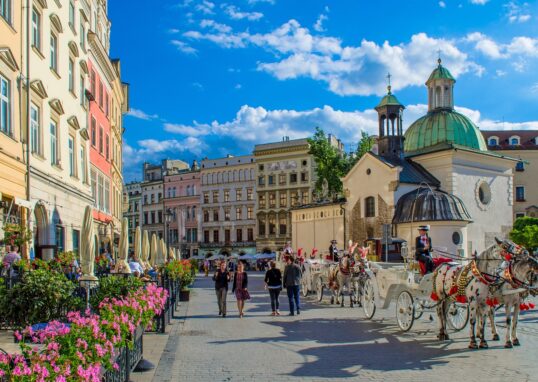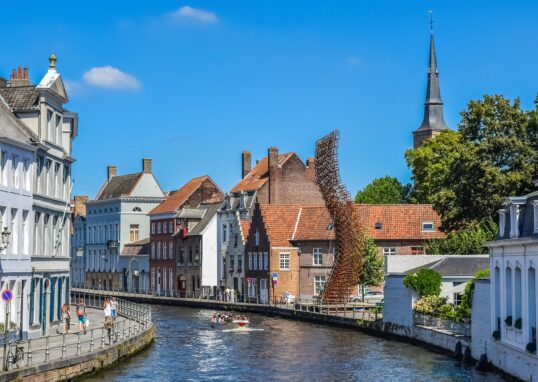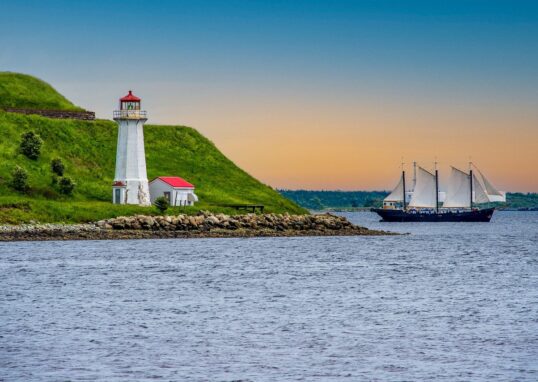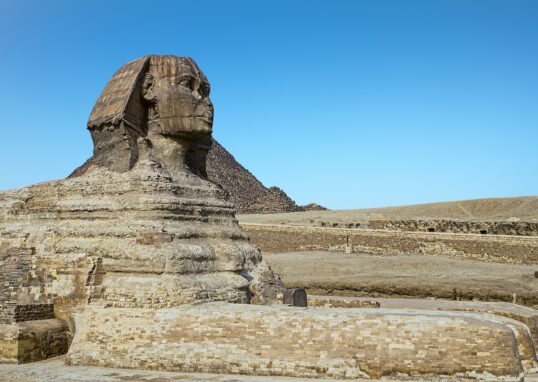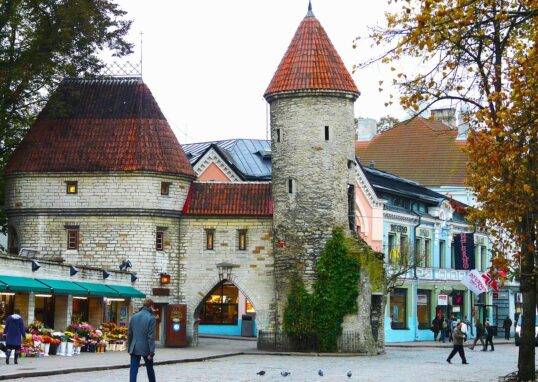
Archaeological Area of Agrigento: A Timeless Journey Through History
The Archaeological Area of Agrigento, Sicily, Italy, is one of the world’s greatest old monuments. It is also referred to as the Valley of the Temples. It consists of the remains of the most important city of the ancient Greek world. It is currently a UNESCO World Heritage Site. Visitors from all over the world travel to visit its temples, ruins, and landscapes. In this article, we shall discuss the history, architecture, and cultural importance of Agrigento. We shall describe the nearby places that make the tour even more exciting. The article is written in simple language, short sentences, and smooth transitions to allow the readers to enjoy the tour.
The History of Agrigento
The Greek Foundation
Agrigento, originally named Akragas, was founded in 582 BC. It was founded by Greek colonizers from Gela and Rhodes. The location had been chosen carefully. It had fertile land, an adequate water supply, and a defensive position at a high point. The city flourished quickly and became a rich Greek colony.
Growth and Power
By the 5th century BC, Agrigento was famous as one of the most powerful cities in the Mediterranean. It was a city with formidable walls, strong fortifications, and beautiful temples. The philosopher Empedocles, a wise thinker of his times, was born here. The city was praised by the poet Pindar as “the most beautiful city of mortals.”
The Carthaginian and Roman Era
But Agrigento suffered through numerous wars. The Carthaginians attacked and ruined most of the city in 406 BC. From then on, the Romans took control in 210 BC in the Second Punic War. Under the Roman times, the city remained important but never reached the same level of greatness.
The Decline and Medieval Period
During the Middle Ages, Agrigento declined. The area was under Arab and Norman rulers, and people moved from the ancient city to a new town on a hill. The temples were deserted, and time eventually covered them up.
Rediscovery
In the 18th and 19th centuries, archaeologists, historians, and travelers rediscovered Agrigento’s riches. Excavations began, and the Valley of the Temples was revealed once more. This breathed new life in the city as a historical and cultural hub.
The Valley of the Temples
The most famous part of the Archaeological Area is the Valley of the Temples. Despite its name, the temples are not situated in a valley but on a ridge. The site includes several well-preserved temples dedicated to Greek deities and goddesses.
Temple of Concordia
The Temple of Concordia is the most famous and best-preserved temple in Agrigento. Built around 440 BC, it is an outstanding example of Doric architecture. The temple has 34 massive columns, and most of them still stand today. Its preservation is so good because it was later converted into a Christian church.
Temple of Juno (Hera Lacinia)
The Temple of Juno was constructed c. 450 BC. It is situated on a hill with lovely scenery. Many of its columns are still standing despite being burned. The temple is particularly radiant at sunset with gold light reflecting on its stones.
Temple of Zeus (Olympieion)
The Temple of Zeus was the largest temple in the ancient world. It was built after the Himera battle in 480 BC. The temple was gigantic, but today there are only ruins left. There were gigantic stone statues called Telamons which served to support the temple. Some of them are preserved in the archaeological museum.
Temple of Heracles
The Temple of Heracles is Agrigento’s oldest temple. It was built in the late 6th century BC. Its eight columns remain today, yet it still reflects the solidity of early Greek architecture.
Temple of Castor and Pollux
The Temple of Castor and Pollux is Agrigento’s symbol. There are four restored columns, and they stand nicely against the sky. It represents the Dioscuri, twin sons of Greek mythology.
Temple of Hephaestus and Temple of Asclepius
Both these temples are less well preserved but are important features within the site. They remind visitors of the size and importance of religion in ancient Greek society.
Other Archaeological Features
Aside from temples, the Archaeological Area of Agrigento features many other remains.
- Necropolises: Ancient cemeteries surround the site. There are rock-cut tombs and burial chambers.
- City Walls: There are some remains of the ancient fortifications. These remind us of the military strength of the city.
- Ancient Roads: There are some paved roads which show how internally connected the city was.
- Sanctuaries: There are small sacred areas around the temples, showing everyday religious practice.
- Hellenistic and Roman Quarter: There are remains of houses, mosaics, and baths that show how people lived later.
The Archaeological Museum
Near the temples is the Regional Archaeological Museum of Agrigento. This is made up of statues, pottery, coins, and remains found in the area. A notable one is the giant stone statue of a Telamon of the Temple of Zeus. The museum offers tourists an insight into the culture, art, and way of life of everyday ancient Agrigento.
Importance of Agrigento
UNESCO World Heritage Site
It was inscribed in the UNESCO World Heritage List in 1997. This protects it for future generations.
Cultural Value
Agrigento shows the brilliance of Greek architecture outside of Greece. It is the story of human genius, religion, and urban planning.
Tourism and Education
The site hosts millions of visitors annually. It is not only a travel destination but also an educational site for researchers and archaeologists to carry out studies.
Visiting Agrigento
Tourists can walk through between the temples, enjoy nature, and study the history. There are guided tours available, and the area is appropriately marked to indicate each structure. Spring and autumn are the ideal seasons to come since the weather is good. Evening visits with lighting give a fairy-like appearance to the temples.
Surrounding Places Near the Archaeological Area of Agrigento
The Archaeological Area of Agrigento is a world treasure. Nevertheless, the journey does not end at the temples. The surroundings thereof add charm, beauty, and culture. A visit to them gives tourists a more profound insight into Sicily. The following is a step-by-step guide to the key destinations surrounding Agrigento and why they are a must-visit.
The City of Agrigento
Old Town Charm
Agrigento’s modern city is actually built on top of the Valley of the Temples. It’s a stroll back in time through the old town. There are narrow streets between the stone houses. Balconies overflow with flowers. Secret corners contain tiny cafes.
Cathedral of San Gerlando
The Cathedral of San Gerlando is the main religious building. It was built in the 11th century by the Normans. It was later modified with Gothic and Baroque decoration. From its raised platform, the cathedral offers panoramic views of the temples and the sea.
Monastery of Santo Spirito
Another gem is the Monastery of Santo Spirito. This 13th-century monastery boasts Gothic archways, serene cloisters, and a church. The local nuns remain here and make almond pastries, which travelers can sample.
Vibrant Squares
Piazza Pirandello is the central square of the city. It is dedicated to the writer Luigi Pirandello, who was born locally. It contains restaurants and shops and is a good spot to relish local life.
Scala dei Turchi
Natural Wonder
About 15 kilometers outside of Agrigento is Scala dei Turchi. It is Sicily’s most visited natural site. It is a massive white limestone rock, stepped in shape.
Why Visit
The contrast of color is stunning. White rock and turquoise ocean. Standing here at sunset is one to remember. It is customary for most visitors to climb up the natural staircase to view the red and golden red sky at night.
History of the Name
It is named “Stair of the Turks.” It was started by pirate attacks long ago. Legend has it that Turkish pirates had once been using the cliffs as a landing site.
Relaxation Spot
Today, it is a tranquil place. People relax on the rocks, swim at the sea, and take photographs. It is also close to some beaches where people can relax.
San Leone
San Leone is Agrigento’s seaside district. It is just a few minutes’ drive from the temples. It comes alive during summer and is full of energy.
Beaches and Fun
The beaches are long and sandy, running for several kilometers. There are sunbeds and umbrellas available on rent. Children like the shallow waters. Young adults visit for beach games such as volleyball.
Evening Life
By night, San Leone is transformed. Restaurants, bars, and clubs open up. The sounds of music echo in the air. Visitors can eat seafood, pizza, or Sicilian ice cream.
Kolymbethra Garden
A Hidden Oasis
Within the Valley of the Temples lies the Kolymbethra Garden. The valley of green is commonly known as a secret paradise.
Ancient Origins
The garden had once been part of Agrigento’s water system. In the 5th century BC, it was a large pool where the city’s water was held. Later, it was fruitful farmland.
Modern Experience
Travelers now walk through orange orchards, olive trees, and almond flowers. There are brooks in the valley that bring freshness to the earth. There are birds singing in the trees.
A Place to Rest
Following the temple visit, the garden is perfect for relaxation. It has shade, quiet paths, and perfumed air. It also shows how well the ancients used nature.
Favara
A Town of Surprises
Favara is approximately 10 kilometers away from Agrigento. At first glance, it seems like a typical Sicilian town. But inside, it contains something special.
Farm Cultural Park
The Farm Cultural Park is an outdoor museum. Historic center old houses have been reused as galleries. Coloured murals cover walls. Modern sculptures are installed in streets.
Why It’s Unique
It takes tradition and merges it with innovation. Foreign artists and locals work together here. Handicrafts are sold in cafes and shops. Favara has become the symbol of cultural renewal for Sicily.
Naro
A Medieval Town
Naro is a tiny town to the east of Agrigento. It is famous for its castle and churches.
The Castle
The Chiaramonte Castle sits on a hill. It is constructed in the 14th century with towers and stone walls. Overlook fields and villages from up top.
Churches
Naro also boasts a number of baroque churches, by the way. The Church of San Francesco and the Church of San Salvatore are perfect examples.
Local Charm
Walking down Naro is peaceful and authentic. It is not as touristy as Agrigento but full of history.
Licata
Seaside Town
Licata is about 40 kilometers from Agrigento. It combines history with the sea.
Historical Role
Licata was an Allied landing area in Sicily in World War II. Monuments honor this.
Beaches and Harbour
Licata has sandy beaches and a bustling harbour. Fishing boats bring in fresh seafood daily.
Local Specialties
Restaurants in this place specialize in sardine pasta and other Sicilian food. Travelers are able to enjoy a peaceful seaside town with good dining.
Siculiana and Torre Salsa
Siculiana is a tiny town north of Agrigento. It has a medieval castle and narrow streets.
Torre Salsa Nature Reserve
Nearby is the Reserve of Torre Salsa. The nature reserve that is protected includes beaches, dunes, and cliffs. It is managed by the World Wide Fund for Nature (WWF).
Why Go
It is full of wildlife. The beach has nesting sea turtles. Birds are breeding in the cliff. The sea is clear and perfect for a swim.
Piazza Armerina 
Roman Magnificence
Though further away (about 100 km away), Piazza Armerina is a worthwhile visit.
Villa Romana del Casale
This villa has the world’s most exquisite Roman mosaics. The mosaics cover more than 40 rooms’ floor. They illustrate scenes of hunting, animals, and even women practicing in bikinis.
UNESCO Heritage
This villa is a UNESCO World Heritage property. It offers a glimpse into Roman luxury and art.
Palermo
The Capital of Sicily
Palermo is 130 km from Agrigento. It is Sicily’s capital and full of life.
Cultural Mix
The city is Arab, Norman, Spanish, and Italian in influence. Palaces, markets, and churches tell varying stories.
Highlights
- Numerous styles are intertwined in the Palermo Cathedral. Golden mosaics brighten the Palatine Chapel. Ballarò and Vucciria markets are colorful and cacophonous, with food and life in every corner.
A Full Experience
Palermo is more than monuments. It is flavor, sound, and the heart of Sicily itself.
Caltanissetta
Heart of Sicily
Caltanissetta is a city in the center of the island. Not too touristy, but nice to visit.
Traditions
The city is known for Holy Week celebrations. Easter parades and statues fill up the streets.
Food and Culture
There are also traditional Sicilian pastries made with pistachios and almonds available. It is a fitting place to stop for travelers willing to get a little more into Sicily. The Archaeological Area of Agrigento itself is magnificent. But the sites surrounding it add to the journey and make it that much more rewarding. Travelers have access to beaches like Scala dei Turchi, towns like Favara and Licata, and cultural attractions like Piazza Armerina. From gardens of ancient times to modern art, from remote villages to booming capital Palermo, the region offers endless diversity.
Conclusion
The Archaeological Area of Agrigento is a treasure of history, culture, and beauty. Its ruins and temples and museum make it one of the world’s top ancient destinations. Nearby places, from beaches like Scala dei Turchi to towns like Favara and Licata, offer additional reasons for travel. Agrigento is not only a window to the past but also an opening to Sicily’s wonders. It is a combination of history and nature, and it offers tourists rich and memorable experiences.

